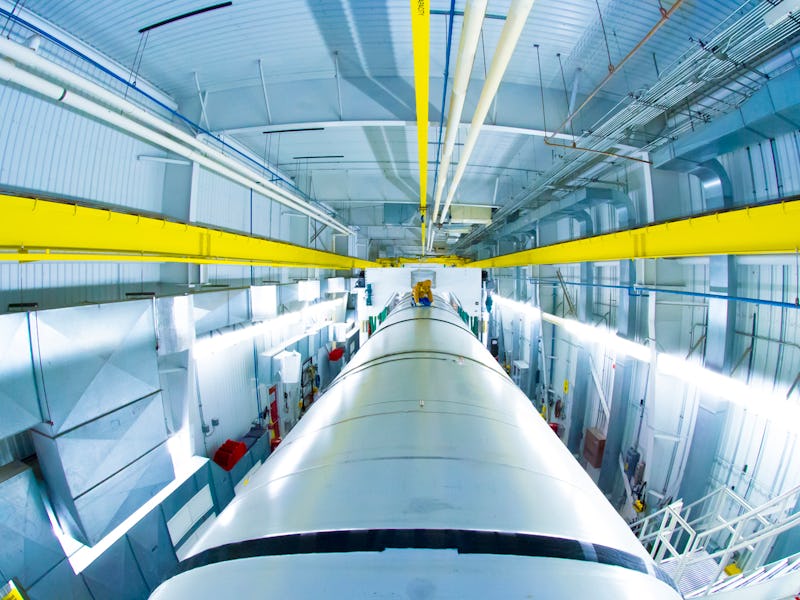NASA's SLS Booster "Chills Out" Before June 28th Tests
NASA shared new photos of what will be "the world's most powerful rocket" as it sat in cool, 40 degree Fahrenheit air.

Today, NASA shared new photos from Orbital ATK’s test facility in Promontory, Utah, where the booster for an exceptionally powerful rocket is currently cooling down under the watchful eyes of crew members. The SLS — or, NASA’s Space Launch System — is on its way to a second qualified ground test on June 28th. The test, which will launch the the 177-foot booster, will be the final full-scale test done in order to qualify the hardware being used for the first two flights of SLS.
The temperature tests are a routine check of how the rocket’s launch temperature holds up against the fire of its launch. “In the winter or summer, you expect your car to start – regardless of what the temperature is outside,” said Mat Bevill, who serves as deputy chief engineer at NASA’s Marshall Space Flight Center’s SLS Boosters Office in Huntsville, Alabama. “That car had to be tested to ensure it performed as it was designed to do, even in wide temperature ranges. That’s pretty much what we’re doing — except with a huge rocket booster.”
The test on the 28th will take approximately two minutes, and will measure 82 design objectives through more than 530 instrumentation channels on the booster itself. Other objectives will include integrating SLS flight-like command and control for motor ignition and nozzle steering. Bruce Tiller, deputy manager of the SLS Boosters Office, fleshed out plans for the first flight in more detail:
We’re working with Orbital ATK as they get ready to fire this booster in June. In conjunction with testing, booster flight hardware is currently in production. NASA is preparing for the first flight of SLS, and each of these programmatic milestones provide crucial data to enable human missions to deep-space destinations, including Mars.
Perhaps the most interesting thing about the SLS is how it will work once it launches. As detailed by NASA:
While the boosters for the space shuttle had four booster segments, the SLS boosters will have five segments. The added booster segment for SLS contains more solid propellant that allows SLS to lift more weight and reach a higher altitude before the boosters separate from the core stage within the first two minutes of flight. The core stage, towering more than 200 feet tall with a diameter of 27.6 feet, will store cryogenic liquid hydrogen and liquid oxygen that will feed the vehicle’s RS-25 engines.
The SLS’s first official mission after this test won’t occur until 2018 at the Kennedy Space Center in Florida. According to NASA, two five-segment solid rocket boosters and four RS-25 engines will propel SLS with the Orion spacecraft on its first mission.